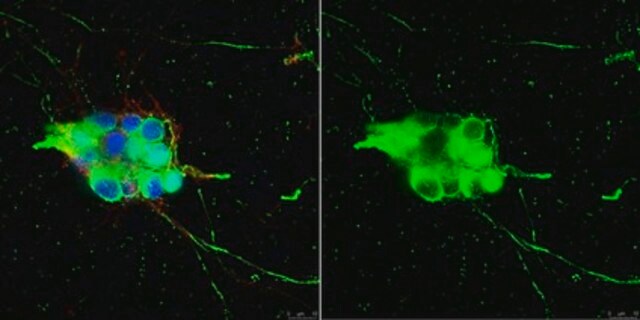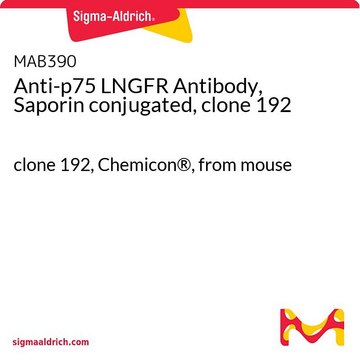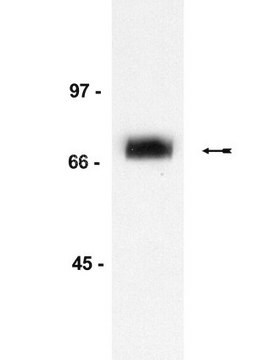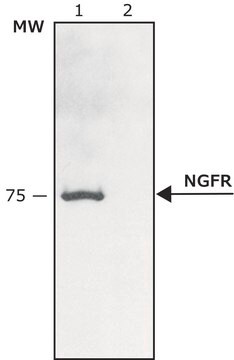N5408
Monoclonal Anti-Nerve Growth Factor Receptor (NGFR p75) antibody produced in mouse
clone ME20.4, ascites fluid
Synonim(y):
Anti-NGFR p75
About This Item
Polecane produkty
pochodzenie biologiczne
mouse
białko sprzężone
unconjugated
forma przeciwciała
ascites fluid
rodzaj przeciwciała
primary antibodies
klon
ME20.4, monoclonal
masa cząsteczkowa
antigen 75 kDa
zawiera
15 mM sodium azide
reaktywność gatunkowa
racoon, monkey, pig, human, feline
spodziewany brak reakcji z
mouse, chicken, rat
metody
flow cytometry: suitable
immunohistochemistry (formalin-fixed, paraffin-embedded sections): 1:1,000 using human tongue
immunohistochemistry (frozen sections): suitable
immunoprecipitation (IP): suitable
indirect ELISA: suitable
microarray: suitable
neutralization: suitable
radioimmunoassay: suitable
western blot: suitable
izotyp
IgG1
numer dostępu UniProt
Warunki transportu
dry ice
temp. przechowywania
−20°C
docelowa modyfikacja potranslacyjna
unmodified
informacje o genach
human ... NGFR(4804)
Powiązane kategorie
Opis ogólny
Specyficzność
Immunogen
Zastosowanie
- for enzyme linked immune sorbent assay (ELISA)
- immunoprecipitation, immunoblotting and immunohistochemistry
- for immunocytochemistry (acetone- or formalin-fixed, Bouin′s solution - or formalin- fixed paraffin-embedded)
- for electron- microscopy radioimmunoassay (RIA) (Kd of 7x10-10 M)
- flow cytometry
- for the inhibition of binding of NGF to the receptor
- for rossette assay
- as a cholinergic immunotoxin
Działania biochem./fizjol.
Postać fizyczna
Przechowywanie i stabilność
Oświadczenie o zrzeczeniu się odpowiedzialności
Nie możesz znaleźć właściwego produktu?
Wypróbuj nasz Narzędzie selektora produktów.
produkt powiązany
Kod klasy składowania
10 - Combustible liquids
Klasa zagrożenia wodnego (WGK)
nwg
Temperatura zapłonu (°F)
Not applicable
Temperatura zapłonu (°C)
Not applicable
Wybierz jedną z najnowszych wersji:
Masz już ten produkt?
Dokumenty związane z niedawno zakupionymi produktami zostały zamieszczone w Bibliotece dokumentów.
Nasz zespół naukowców ma doświadczenie we wszystkich obszarach badań, w tym w naukach przyrodniczych, materiałoznawstwie, syntezie chemicznej, chromatografii, analityce i wielu innych dziedzinach.
Skontaktuj się z zespołem ds. pomocy technicznej








